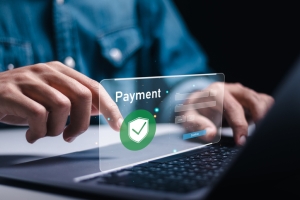By John Toman, Co-founder & Chief Product Officer, Pivot Payables

Commercial virtual cards have been available for years as a payment method for businesses to make purchases. Despite their long-standing presence, many grossly misunderstand their value and not just within the payments industry. Most companies are either unaware of their existence or lack an understanding of the significant improvements they can bring to business processes related to purchasing goods and services—both by employees and others outside the company.
Even companies that currently use virtual cards may not be aware of the recent modernization of this payment tool. Innovations have been driven by the commercial card industry’s recognition that, to realize the full value of virtual cards, fintechs must embed virtual card functionality into their apps. The idea is that fintech apps can offer a holistic user experience that not only leverages the unique capabilities of virtual cards but also introduces new and exciting ways to use them.
Card issuers are not well-suited to creating such apps. To enable fintechs to develop these applications, card issuers have created APIs that provide access to virtual card functionality, such as card user enrollment, card issuance and card management.
Virtual Card Capabilities
The value of virtual cards starts with the understanding that they offer capabilities distinct from those of physical commercial cards. The most significant advantage is that virtual cards can be created for specific intended uses since there isn’t a physical card to issue. An intended use typically involves a set of purchases addressing a particular purchasing scenario.
Common examples of intended uses include:
- A business trip
- A specific business activity, such as a client matter, construction job or marketing campaign
- An organizational unit, such as a department
- A specific vendor or merchant category
- A specific budget for an accounting period

Additionally, virtual cards can be issued to employees to whom companies do not want to provide physical cards due to internal control reasons. They can also be issued to individuals outside the company, such as freelancers, subcontractors and job candidates traveling for an interview. This flexibility opens up possibilities for financial leaders and business process owners not only to improve financial operations but also operations across the entire company.
However, most decision-makers do not understand that virtual cards can safely and efficiently enable purchases by people inside and outside the company. They have yet to imagine how to use virtual cards operationally.
Virtual Cards for Recruitment
Consider the HR process of recruiting talent. This process can involve bringing in candidates who live far away for interviews. A prime example is the legal industry, which annually recruits students from top law schools across the country, paying for their travel and related incidental purchases. Traditional approaches to paying these expenses are even more cumbersome than employee expense reports because the candidates are not employees.
Here, the idea of issuing virtual cards to candidates for their travel services and incidental purchases, such as ground transportation, comes into play. Leveraging the intended use feature of virtual cards, these cards can have controls for the available amount and an effective date that covers the duration of the trip. They are valid only for merchants providing travel services and ground transportation. This makes it safe for candidates to use these cards for their necessary purchases and easy for the accounting department to reconcile.
Virtual Cards for Purchases

Another example is the engineering department of mobile carriers responsible for installing and repairing cell towers. This process often involves an onsite crew that needs to purchase a permit before beginning work. Traditionally, mobile carriers addressed this by having a crew member submit a payment request to accounts payable, which would then issue a check with the permit issuer as the payee.
This process is not only as cumbersome as filing expense reports but also works for only items known before arriving onsite. It doesn’t work for items discovered during the job. Conversely, issuing a crew member a virtual card allows the crew to purchase whatever they need to complete the job, including items known beforehand and items discovered during the job. Even better, these purchases are tied to a specific job number, aiding project accounting.
Virtual Impact & Reliability

Once financial leaders and business process owners understand how virtual cards can improve operations, they see opportunities across a wide range of processes for using virtual cards in ways they couldn’t imagine previously. Bolstering the use of virtual cards with an operationally focused app delivers these opportunities and maximizes the benefits of virtual cards. This results in reliable financials for management, a smoother process for accounting and a quick and convenient way for people to get their jobs done.
About the Author

John Toman is Chief Product Officer and Co-founder of Pivot Payables, a fintech company delivering corporate financial operations solutions. With a history of developing accounts payable automation and business-to-business payment solutions, Toman is a pioneer in applying AI, blockchain and virtual credit cards to improve financial operations. Toman writes about all things AP in his blog, “The Payables Guy.” Visit Pivot Payables at https://www.pivotpayables.com/.

